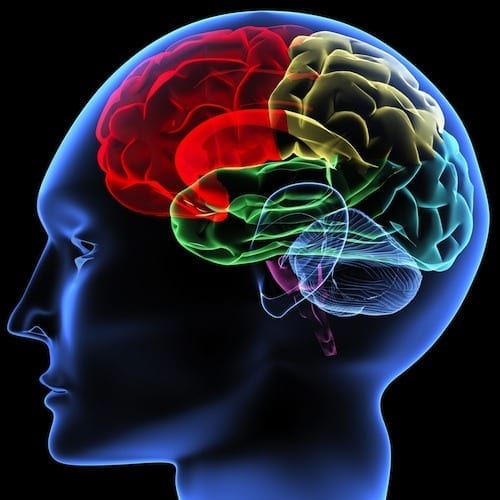
Rockefeller University scientists have analysed soils from beaches, forests, and deserts on five continents and discovered the best places in the world to mine untapped antibiotic and anticancer drugs.
The findings, published in the open-access journal eLife, provide new insights into the natural world as well as a road map for future drug discovery. The scientists now want to collect more samples from unique environments such as caves, hot springs, islands and city parks. They will continue with their citizen science effort, Drugs from Dirt, inviting the public to submit samples.
While there are more microbes in a teaspoon of soil than there are humans on earth, only a tiny fraction have been cultured. Of these, only a small number of the potentially clinically useful chemicals produced by bacteria have been studied.
For this study, one hundred and eighty five samples were taken from rainforests, temperate forests, deserts, and beaches on five continents (North America, South America, Africa, Asia and Australia) and the oceanic islands of Hawaii and Dominican Republic. The study of the “biosynthetic” content of these soils shows their potential for drug discovery.
“Uncultured bacteria from the environment could provide a dazzling array of new molecules, many of which could become new medicines,” says lead author and postdoctoral fellow Zachary Charlop-Powers from The Rockefeller University in New York.
“The unbelievable diversity we found is a first step towards our dream of building a world map of chemicals produced by microbes — similar to Google Earth’s and others’ maps of the world’s geography,” says Dr Sean Brady, head of the Laboratory of Genetically Encoded Small Molecules also at The Rockefeller University in New York.
The vast majority of antibiotics in clinical use today are derived from soil bacteria, but the yield of new drugs is low because the same cultivated bacteria, and the set of molecules they synthesise, are repeatedly rediscovered. However, for every cultured bacterial species, there are 100 uncultivated species in the environment.
Scientists have previously identified clusters of bacterial genes that are particularly good at producing therapeutics. This knowledge meant the scientists could focus on searching for certain types of gene clusters in samples rather than having to sequence and analyse the whole genomes of bacteria.
The team compared environmentally derived DNA to DNA from laboratory-grown bacteria chosen for their ability to make more than 400 natural product compounds. The analysis revealed soils particularly rich in important gene clusters.
Read more: Drugs from dirt — Scientists develop first global roadmap for drug discovery
The Latest on: Drug discovery
[google_news title=”” keyword=”Drug discovery” num_posts=”10″ blurb_length=”0″ show_thumb=”left”]
via Google News
The Latest on: Drug discovery
- ELRIG UK announces Profs Ijeoma Uchegbu and Marcus Schindler as keynote speakers at Drug Discovery 2024on May 2, 2024 at 1:01 am
Connecting Minds, Transforming Science, Empowering Community will take place at ExCeL London from 2–3 October.
- Schrodinger Inc (SDGR) Q1 2024 Earnings Call Transcript Highlights: A Mixed Start with ...on May 2, 2024 at 12:39 am
Explore the key financial outcomes and strategic updates from Schrodinger Inc's first quarter of 2024, highlighting both growth areas and hurdles.
- Two-punch treatment delivers blood cancer knockout: Study shows drug combo eradicates cancer cells in lab-based testson May 1, 2024 at 6:47 am
The discovery, published in Cancer Cell, could soon lead to clinical trials, providing hope for the 1,100 Australians diagnosed with AML annually. The WEHI research team paired venetoclax, a current ...
- NYC-based AI drug discovery company moves HQ to Cambridgeon April 30, 2024 at 6:57 am
If you are not in Boston, you are not in biotech, in my opinion,” said the founder of Insilico, a 10-year-old AI drug discovery company that's moving its headquarters from New York to Massachusetts.
- Xaira Launches with $1 Billion to Pioneer AI-Driven Drug Discoveryon April 28, 2024 at 11:36 pm
Xaira Therapeutics, an AI drug discovery startup, recently launched with a remarkable $1 billion funding, backed by prominent investors like ARCH Venture Partners and Foresite Labs. The company, led ...
- A Pharmaceutical Company is Working to Speed Up the Drug Development Process with AIon April 28, 2024 at 9:50 pm
Algorae Pharmaceuticals is finding ways to revamp its process of drug development from cost saving and speed to timeline of drug research and delivery by ...
- This Biotech Startup Aims To Speed Up Drug Testing On Animalson April 26, 2024 at 3:29 am
Gordian Biotechnology’s platform allows for potentially hundreds of gene therapies to be tested in an animal at the same time — without harming it.
- Using Explainable AI To Ensure Drug Discovery Safetyon April 25, 2024 at 5:00 pm
Can you discuss the significance of this for drug discovery/ development? SW: Safety is a huge cause of failure, 56% of projects are failing from preclinical trials onwards due to safety. Yet, when we ...
- A shortcut for drug discovery: Novel method predicts on a large scale how small molecules interact with proteinson April 25, 2024 at 11:00 am
For most human proteins, there are no small molecules known to bind them chemically (so-called "ligands"). Ligands frequently represent important starting points for drug development but this ...
- The Difference Is the Data: Drug Discovery’s AI Revolutionon April 25, 2024 at 4:00 am
New data-intensive platforms continue to leverage artificial intelligence tools for improved speed and failure rate reductions for drug discovery.
via Bing News










